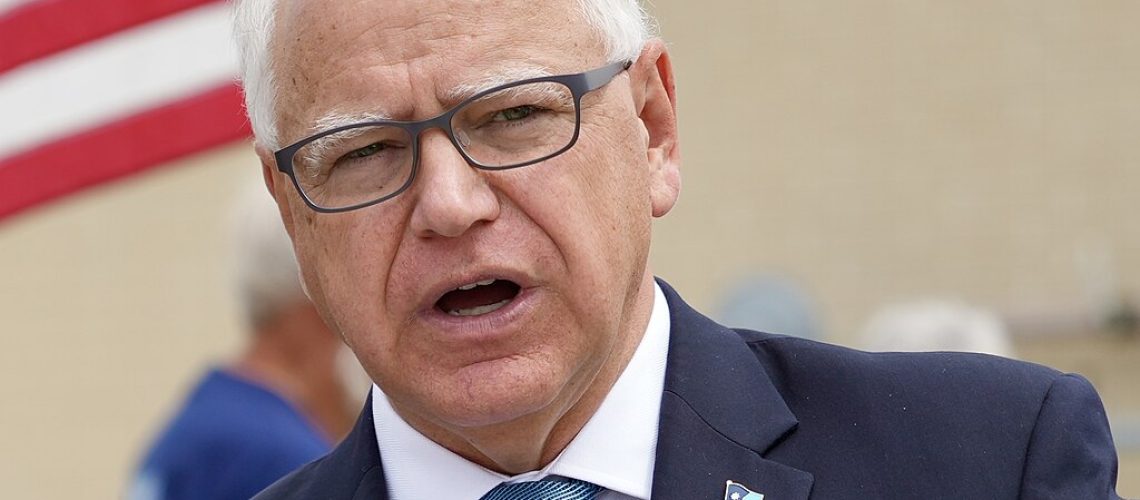Minnesota jumped in state rankings for solar installations, in part due to Governor Walz’ leadership, and what he has promoted on the state level would add to Harris’ record on the national stage.
When Kamala Harris announced Tim Walz, governor of Minnesota, as her running mate in the 2024 presidential election, he was relatively unknown on the national stage. But in Minnesota, he has a strong record on climate. pv magazine USA reviewed his clean energy record with Minnesota Solar Energy Industries Association (MNSEIA) and learned that it goes beyond signing the landmark state climate bill that aims for 100% clean energy by 2040.
Minnesota is currently ranked 16th in the nation for installed solar, jumping up from 23rd place in 2023. According to Logan O’Grady, executive director of MnSEIA, this jump in rank is largely due to the success of the state’s first-in-the-nation Community Solar Garden Program that deployed nearly a gigawatt of community scale solar (mostly 1 MW and under) in under ten years.
Walz has stated that he wants to put solar on every school in Minnesota and fought to establish Minnesota’s popular Solar for Schools program. Currently, Minnesota has more than 23 MW of solar installed across nearly 190 schools. Minnesota is among the top states for solar schools, ranking 13 for installed solar capacity and 11 in total number of solar schools. Because of the popularity of this program, Walz signed into law Minnesota’s Solar on Public Buildings program to put solar on local government buildings across the state.
In addition to putting solar on schools and public buildings, the Walz-Flanagan Administration supported Minnesota’s new Distributed Solar Energy Standard (DSES) that requires investor-owned utilities to meet a certain percentage of their retail sales through distributed solar (10 MW and under).
Last year Walz signed the 100% carbon-free energy by 2040 bill, and he signed bills to modernize Minnesota’s nation-leading community solar garden program, extended and provided historic funding for Minnesota’s residential incentive program (Solar*Rewards), created an interconnection cost-sharing program, ordered an energy storage study to determine how much energy storage Minnesota must procure to meet the State’s carbon free goals, developed the state’s first energy storage incentive program, and other grants to political subdivisions, state agencies, and other organizations to complete clean energy projects.
While Governor Walz passed a permitting reform bill that will speed up transmission-scale renewable energy in Minnesota, MISO interconnection queues and transmission system upgrades remain a problem for utility-scale projects. “So, while we expect permitting reform to reduce the time necessary for that aspect of the process, the process of constructing and energizing utility scale solar projects is still much lengthier than small and mid-scale distributed energy resources,” O’Grady told pv magazine USA.
To help spread distribution upgrade costs across developers in the interconnection queues, Minnesota enacted a new law in 2024. This moves the state away from the “cost-causer” approach to interconnection upgrade costs where a single developer must foot the bill for grid upgrades benefiting everyone to a more socialized cost where any developer benefiting chips in.
Challenges
As in many states, a growing project pipeline results in a growing backlog. So while the Community Solar Garden program has been a success, it’s currently “gridlocked by a massive backlog,” according to O’Grady, which said is the result of a lack of investment in grid upgrades to expand distribution system capacity for renewable energy. Ohm Analytics reports that Minnesota has 643 solar projects in the pipeline of all sizes of solar, resulting in hundreds of megawatts of clean energy being stalled in development.
Xcel Energy is adding to the problem, O’Grady said, by limiting the capacity of its entire distribution system by 20%, which is estimated to be approximately 2 to 3 GW of unused capacity.
When asked what the Walz administration needs to do to encourage more solar growth in the state, O’Grady said “Minnesota should pass more bills to reform our interconnection application system so we can get more solar projects out of the queue and onto the grid”.
Furthermore, MnSEIA fought to implement the state’s first energy storage incentive program in 2023 that provides up-front grants to residential and commercial solar users to pair their solar systems with a battery. MnSEIA would like to see the state further encourage storage adoption by developing rules around compensation for battery owners who deploy stored energy to the grid at the benefit of the utility and other utility customers.
Stronger oversight is needed of utilities by the Minnesota Public Utilities Commission, according to O’Grady. And, finally, the industry association would like to see the administration encourage more distributed solar assets rather than only utility-scale solar. “Distributed solar projects can go through the interconnection process faster and are better for the reliability and resiliency of our electric grid,” said O’Grady.
Moving forward
A Harris-Walz Administration would be strong clean-energy advocates, according to O’Grady, because Harris brings the experience of having passed the landmark Inflation Reduction Act and Walz the leading state carbon-free standard. In addition, Walz has worked to bring hundreds of millions of dollars in IRA funding to Minnesota. In April, for example, Walz announced Minnesota received $62 million from the U.S. Environmental Protection Agency’s Solar for All program for solar projects that will help families save on energy costs.
“We can tackle climate change while saving families money. These grants are a great example of how we can make that happen,” said Governor Walz. “Minnesota’s health, wellbeing, and economic future depend on us taking climate seriously. This grant is a major step in the right direction as we continue to create clean energy jobs and move toward 100% carbon-free electricity by 2040.”
“Walz will bring Minnesota’s Climate Action Framework with him to DC and help develop ways to accomplish what Minnesota has at a larger, national scale,” said O’Grady.




